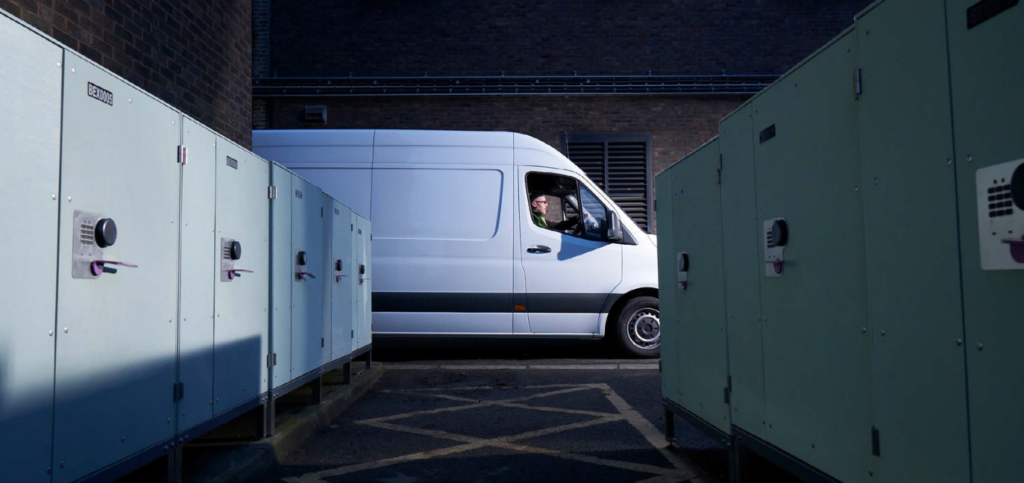Blogs
01 February 2024
Reading Time: 5 mins
Blogs
01 February 2024
Reading Time: 5 mins

Eseye
IoT Hardware and Connectivity Specialists
LinkedInThe fleet management industry is witnessing a transformative era of efficiency and intelligence.
Fleet management solutions can be defined as a vehicle-based system that incorporates data logging, satellite positioning and data communications to a back office application.
Projections indicate a staggering growth in the use of IoT in fleet management. The installed base of Fleet Management (FM) systems is expected to surge to 25 million units by 2026. The future of fleet management is driven by IoT-enabled telematics.
In the European market, all leading truck manufacturers, including Daimler Truck Group, Mercedes-Benz Group, Volvo Group, Scania, MAN Truck & Bus, DAF Trucks, and Iveco, have incorporated Original Equipment Manufacturer (OEM) telematics solutions as standard features in their product portfolios.
Telematics companies offer conventional controller area network (CAN) bus monitoring, transmitting diagnostic information via cellular connections to central IoT platforms. Fleet management businesses utilize this data to guide quick decisions, and provide accurate insights to inform long-term strategic planning.
In this blog, we look at the ways the fleet management industry can harness opportunities presented by IoT, some of the challenges it faces when executing deployments, and how we can help you realize IoT success.
Implementing an IoT-based fleet management system allows manufacturers to realize valuable benefits such as:

84% of respondents believe that hardware design is the number one barrier to deploying IoT.
Getting the IoT device right is imperative. It’s the foundation of a successful IoT project. We recommend adopting a Connected-by-Design approach and ensuring connectivity is at the forefront of the IoT device design process.
Connectivity is fundamental to the proposition, acting as the glue that binds the various elements of the stack, and there are many potential pitfalls. This means that it cannot be simply bolted onto the solution after it has been built and/or deployed. It must permeate the design process. Hence 'Connected-by-Design.”
Matt Hatton, Chief Analyst, Transforma Insights
OEMs rely heavily on their IoT devices for daily operations, which makes it all the more important that they are rigorously tested on the bench to ensure they can perform in different connectivity scenarios.
As part of our device validation service, we simulate challenging situations and observe how the device behaves and whether it can recover connectivity gracefully. Once the device is out in the field, it needs to be regularly maintained with over-the-air software and connectivity updates to maintain uptime and service availability. Manually updating individual OEM devices is both costly and time-consuming.
Cisco’s data reveals a staggering 75% failure rate in IoT projects, with a significant 60% stumbling at the proof-of-concept stage. Manufacturers of fleet management systems face numerous technical, operational, and commercial challenges in achieving successful deployments.
Fleets are constantly on the move, and this means regularly crossing geographical borders. A dropped connection due to unreliable coverage threatens the ability of IoT fleet management systems to provide real-time information.
Historically, fleet management solutions have used satellite navigation to send, receive and store telematics data. Satellite IoT connectivity is notoriously expensive to build into devices, and faces challenges in delivering the lower latency needed to enable real-time tracking of a fleet’s vehicles.
To unlock the full potential of an IoT fleet management system, consistent global connectivity is crucial. Cellular IoT connectivity is an attractive option because it is highly available with wide geographic coverage and low latency.
We took a device-first approach when helping BT to optimize its final mile smart locker service.

BT wanted to ensure its Telecom engineers were within a 15-minute drive from essential parts. Our in-house IoT device design consultancy brought BT’s vision from idea to proof of concept in weeks, overcoming challenges such as the need for the units to be exceptionally robust. Our AnyNet+ SIM card is embedded into each locker, delivering 100% cellular connectivity by ensuring it’s connected to the strongest possible network at all times. Engineers are instantly alerted when items arrive at the box, and receive one-time codes to unlock them. The devices also track usage and system functionality, and allow firmware updates to be made over-the-air. As a result of the initiative, engineers spend less time traveling, which has enabled BT to reduce its delivery costs and carbon footprint, as well as provide a better service.
Bringing IoT cellular connectivity to fleets of vehicles and other assets has huge advantages for manufacturers and their customers. The ability to generate real-time updates on mission-critical data points allows manufacturers to offer competitive and potentially lucrative value-add services. Fleet managers and operators gain a detailed, accurate understanding of vehicle usage, performance, status and condition, which can be leveraged to reduce costs, streamline operations, and improve safety.
For the potential of an IoT fleet management system to be fully realized, consistent availability and reliability of cellular coverage must be guaranteed, wherever in the world the asset is. This makes choosing the right IoT connectivity solution the most important strategic decision a manufacturer will make.
At the core of our offering is an end-to-end connectivity solution that simplifies and accelerates IoT deployments by enabling customers to work with one partner, one SIM card, one platform, and one bill. Our award-winning AnyNet+ eSIM provides a reliable, near 100% cellular connection for fleet management devices wherever they are in the world. Our eSIM stores multiple network profiles that can be autonomously managed and switched over-the-air to deliver the best connectivity.
This means fleets can be tracked anywhere they go as tracking devices connect to the nearest mobile network, thanks to our AnyNet Federation relationships with more than 700 operators in 190 countries. This ensures maximum device uptime and reliable connectivity across diverse territories.
Our eSIM localization offers a solution to industry challenges associated with permanent roaming, and improves the reliability of mobile assets. This is particularly beneficial for the fleet management industry, where devices are constantly moving.
Integrating IoT into fleet management systems holds great promise, and our innovative IoT connectivity solutions make it straightforward for businesses to adopt IoT and scale with ease.
Want to learn more about how our award-winning IoT connectivity solutions can maximize business value while minimizing risk?
Download Whitepaper
Eseye
IoT Hardware and Connectivity Specialists
LinkedInEseye brings decades of end-to-end expertise to integrate and optimise IoT connectivity delivering near 100% uptime. From idea to implementation and beyond, we deliver lasting value from IoT. Nobody does IoT better.
Predictable performance is the key to IoT success. Let our experts test your device for free. Receive a free trial IoT SIM trial kit and speed up your IoT deployment with expert insights and seamless connectivity.